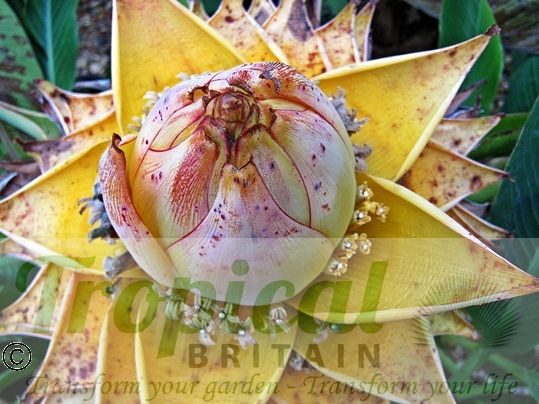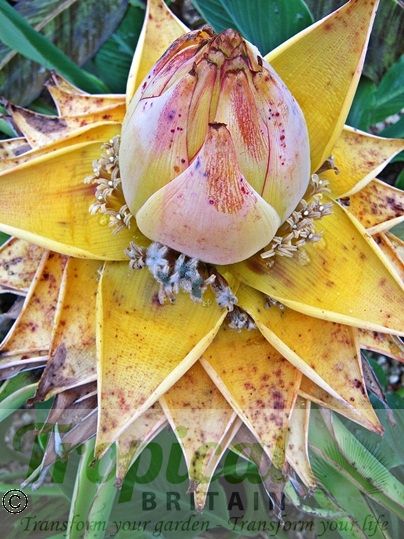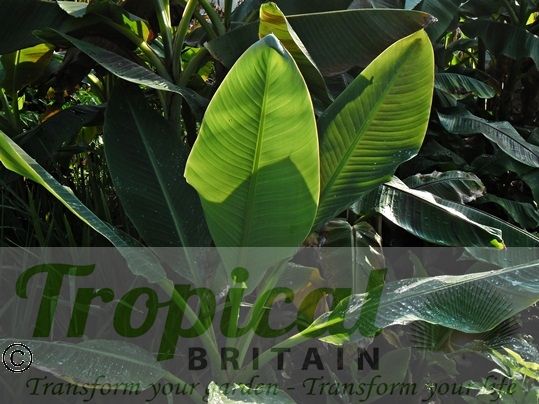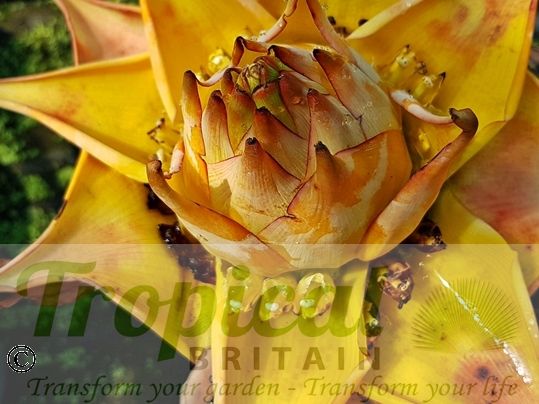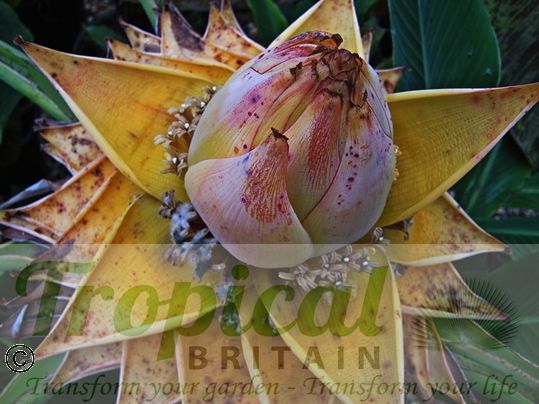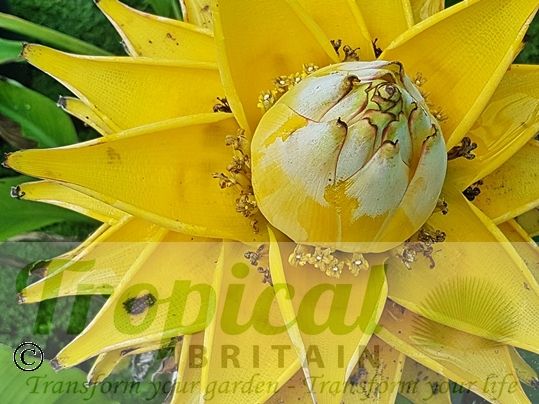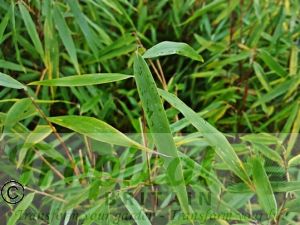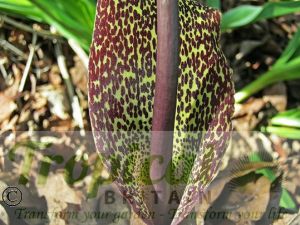Ensete lasiocarpum, the Golden Lotus Banana is known to most exotic gardeners and nurserymen as Musella lasiocarpa and they are probably unlikely to change their labels any time soon. It was moved to the genus Ensete in 2010 based on analysis of DNA sequence evidence which showed a shared chromosome number (2n=18) with Ensete. This taxonomical work by Ai-Zhong Liu, W. John Kress and De-Zhu Li was later questioned and challenged by H. W. Li who asserted its unique morphological characteristics. The taxonomic status - always something of an issue when it comes to bananas - was made more complex by the discovery in 2002 of a population in Vietnam which was originally given the name Musella splendida but which was subsequently subsumed into this genus.
Horticulturally, this is a superb and highly valued species particularly for its stunning inflorescence, a magnificent example of botanic sculpture with an enormous rosette of yellow flower bracts which resemble the shape of a giant lotus. The small flowers appear between the overlapping layers of bracts.
The overall shape is stout and the foliage is relatively stiff compared to a Musa and the leaves have a subtle but very attractive glaucous sheen.
Water well during the summer and give it regular feeds of liquid fertiliser.
In terms of hardiness, I place it third behind Musa basjoo and Musa sikkimensis. Sensible precautions to ensure its safe survival through the winter include thick mulch and wrapping the pseudostem with fleece or some other insulating material.
A wonderful and probably an essential addition to any exotic garden.
Additional Information
| Order | Zingiberales |
|---|---|
| Family | Musaceae |
| Synonyms | Musa lasiocarpa, Musella lasiocarpa, Musella splendida |
| Geographical Origin | China: Guizhou and Yunnan. Another population, originally described as Musella splendida, was discovered in Vietnam in 2002 |
| Cultivation | Warm sheltered aspect in sun or partial shade. Water and feed well in the growing season. Mulch heavily in winter and fleece the pseudostem |
| Eventual Height | 2m |
| Eventual Spread | 2m |
| Hardiness | Herbaceous perennial. Root-hardy in much of the UK if given adequate mulch and protection. Protecting the pseudostem with fleece is a sensible precaution. Can also be planted in a large container and brought in to a conservatory over winter |
-
excitingordered this plant at end of march it is now almost end of april and showing movement on first leaf can not wait.good well rooted plant
Posted on

Free DELIVERY
ON ALL ORDERS OVER £99THIS OFFER IS VALID ON ALL OUR STORE ITEMS.

